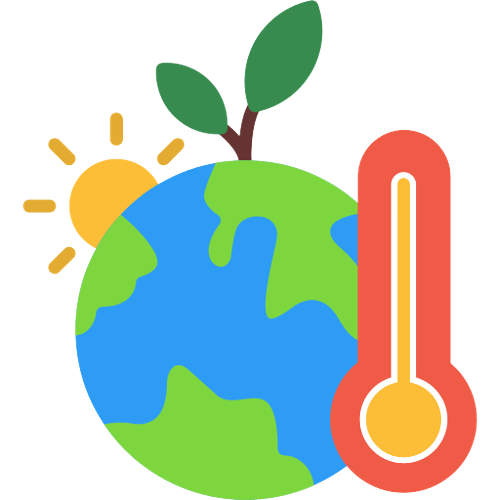Denounce with righteous indignation and dislike men who are beguiled and demoralized by the charms pleasure moment so blinded desire that they cannot foresee the pain and trouble.
Read MoreSustainability Now
Not Tomorrow
Ignite change, because the planet can't wait.
Discussing the impact of greenhouse gas emissions on the Earth's climate and the urgency of addressing climate change.
Greenhouse Gas Role
These gases act like a blanket around our planet, trapping heat and raising the ambient temperature. The consequence?

Consequence: Global Warming
A global warming of approximately 1.5°C above pre-industrial levels, a milestone that underscores the urgency of addressing climate change
The Alarming Mechanisms of Global Warming
Mechanisms of Global Warming
The mechanisms behind this warming are alarming in their simplicity. GHGs trap solar radiation in the Earth's atmosphere, preventing it from escaping back into space. While this natural greenhouse effect is essential for maintaining a habitable climate, human activities, such as burning fossil fuels and deforestation, have intensified this effect.
Unprecedented Consequences
The outcome is a planet that is heating up at an unprecedented rate. This 1.5°C rise in temperature has triggered a cascade of disastrous events, from more intense heatwaves and droughts to rising sea levels and widespread ecosystem disruptions.
Beyond Greenhouse Gases
However, the climate crisis doesn't end there. The same industrial processes that led to GHG emissions also introduced synthetic chemicals, including hydrofluorocarbons (HFCs) and chlorofluorocarbons (CFCs), into the atmosphere. While these substances were initially hailed as refrigerants and propellants, their consequences were catastrophic.
Ozone Depletion and the Unleashing
Ozone depletion matters because the ozone layer acts as Earth's shield against harmful ultraviolet (UV) radiation from the sun. A weakened ozone layer allows more UV radiation to reach the Earth's surface, posing significant risks to human health, ecosystems and the environment.
Intensifying the Crisis
Ozone-depleting substances, such as CFCs, have a high ozone-depleting potential (ODP), exacerbating the problem. Once released into the atmosphere, they ascend to the stratosphere, where they interact with ozone molecules, causing their depletion.
Global Cooperation for Environmental Healing
Addressing these challenges requires global collaboration. The Montreal Protocol, an international treaty aimed at phasing out ozone-depleting substances, has made significant strides in protecting the ozone layer.
Synergy of Ozone Depletion and Climate Change
However, it's crucial to accelerate efforts to phase out HFCs, as outlined in the Kigali Amendment and simultaneously curb GHG emissions. Transitioning to eco-friendly refrigerants, enhancing energy efficiency and fostering sustainable practices are vital steps toward mitigating both the warming effect of GHGs and the ozone layer depletion.
01
Phasing Out HFCs and Sustainable Practices
The intertwined issues of GHG-induced warming and ozone layer depletion emphasize the complexity of our environmental challenges. Urgent action is imperative.
02

Vicious Cycle
The depletion of the ozone layer and the concurrent warming due to GHGs create a dangerous synergy, amplifying the adverse effects of climate change. Rising temperatures lead to more demand for air conditioning, which, in turn, increases the use of HFCs—a potent GHG and ozone-depleting substance—in refrigeration systems. This vicious cycle perpetuates environmental damage and accelerates climate change.
03
Montreal Protocol Success
By embracing sustainable practices, transitioning away from harmful chemicals and collectively championing environmental stewardship, we can mitigate these twin threats, ensuring a safer and more sustainable future for our planet.









